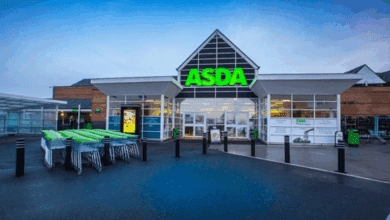Are BNPL schemes here to stay?
BNPL schemes, which as an industry is expected to be worth £43bn by 2025, are used by almost half of Gen Z as its accessibility has been tempting in a pinch. Could it mean the end of credit cards in years to come?

Register to get 1 free article
Reveal the article below by registering for our email newsletter.
Want unlimited access? View Plans
Already have an account? Sign in
Buy Now Pay Later (BNPL) schemes, which are a form of short-term financing that allows customers to purchase things and pay at a later date, often interest-free, have seen a boom in popularity in recent years. It is now considered the fastest-growing payment method around, with the whole BNPL industry expected to continue growing by more than 250% from £17bn in 2021 to £43bn by 2025.
Due to the popularity and ease of BNPL schemes such as Klarna, online credit card payments are in turn expected to decline, as a whole new generation has another option at the checkout.
According to Melanie Vala, the chief commercial officer at Deko, a retail finance and BNPL company, credit cards first started as tools for retailers to boost sales, with customers opening accounts at stores, not banks. Vala sees the favourable attention BNPL schemes have been getting as “less of a shift and more of a cyclical return to retailers being the primary benefactor of credit-based payment methods”.
Given the soaring rise in the cost-of-living, many have had to resort to borrowing, or in this case, delaying payments in order to take care of necessities first. According to NerdWallet’s ‘2022 Household Debt Report’, 45% of Britons consider themselves to be in some form of financial debt, that does not include mortgage debt or student loans.
While credit card debt still remains the most common form of borrowing at 42%, one in six (15%) UK consumers have had to rely on BNPL providers as a way to shop, according to the report.
The post-pandemic rise in the cost-of-living has spurred a need for such schemes, but another factor that has added to its popularity is the convenience it provides. Lately, mobile payments have contributed to the demand for BNPL, which have been integrated into apps to improve accessibility.
Meanwhile, the introduction of an interest-free financing offer has given customers greater financial flexibility, according to Vala, which might be why some have opted for BNPL schemes as opposed to credit cards, which usually incur interest.
Deko has noticed that Gen Z specifically has embraced BNPL schemes more readily than older generations. As the ‘first mobile generation’, “convenience, transparency and flexibility” are what the younger generation are looking for in their payment plans, according to Vala.
In fact, a survey by MX into the money habits of Gen Z found that less than half of those under the age of 25 have a credit card, which could suggest that they are opting for BNPL schemes to fill the gap that traditionally would’ve been filled by a credit card. Meanwhile, 61% of millennials, 65% of Gen X, and 81% of baby boomers carry at least one credit card. The same survey also found that Gen Z prefer using debit cards over credit cards when buying online, with debit cards and cash being preferred in brick-and-mortar stores.
As young people grow older, we might see the decline – or even the extinction – of credit cards, as another survey by management consulting company, Bain and Company, found that 42% of Gen Z consumers were BNPL users, with only 31% using credit cards. In contrast, older generations make up 25% of all BNPL users and 62% of credit card users.
On the topic of the future of credit cards, Vala says: “This clear shift emphasises where the market is moving with the upcoming generations. Access to finance coupled with digital and financial literacy is a very positive marker to predict eCommerce growth. So, the key trend retailers should take note of is not the demise of the credit card, but rather the rise of the expectation from Gen Z consumers for more flexible payment options.
“Those retailers who adopt BNPL can benefit from improved basket abandonment rates, boosted order sizes and better customer retention,” she adds. “Whereas those who do not, face dwindling market share and the possibility of being left behind.”
On the topic of cart abandonment on any given online retailer’s site, it sits at around 80%, which is a large amount of potential consumers that have thought about buying something, only to never follow through. Vala has attributed such a high cart abandonment rate to poor checkout experiences for the customer, as well as low levels of consumer trust.
“The customer-first culture of BNPL schemes can help address these issues,” she says. “For example, BNPL gives customers the freedom to spread costs over several payments, which in turn empowers them with greater financial confidence. Retailers can meet the needs of their customers who need this additional help head-on by providing this payment option at checkout. Plus, when it comes to spending online, consumers are more likely to spend through an outlet they can trust online, such as reputable BNPL providers. The effect of this improved checkout experience and increased consumer trust can crucially help smaller retailers improve their conversion rates and sales.”
Credit cards first emerged in the form of ‘charge cards’ in the 1920s at US retailers, and were used as marketing tools to increase custom and spending. It wasn’t until the 1950s and 60s that they developed into bank card schemes, which first launched in the UK in 1966. Visa and Mastercard followed in the 1970s.
The eCommerce boom of the early 2000s, which offered faster and more convenient shopping channels to consumers, coincided with advancements in financial services technology. By 2010, online retailers offered alternative payment methods, so a change in perceptions against credit cards may not be too far-fetched.







